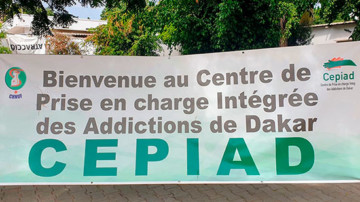
Death Penalty 100/100
1 Does the country retain the death penalty for drug offences? No
source: Harm Reduction International (2021), THE DEATH PENALTY FOR DRUG OFFENCES: GLOBAL OVERVIEW, Available online at: https://www.hri.global/death-penalty-2020
Senegal is not listed as one of the states that retains the death penalty for drug offences in Harm Reduction International's (2021) The Death Penalty for Drug Offences: Global Overview 2020.2 What is the extent of death penalty application for drug offences in the country? N/A
source: Harm Reduction International (2021), THE DEATH PENALTY FOR DRUG OFFENCES: GLOBAL OVERVIEW, Available online at: https://www.hri.global/death-penalty-2020
Not ApplicableExtra-Judicial Killing 100/100
3 To what extent is the practice of extra-judicial killing prevalent in the course of military and police anti-drug activity? Not at all
source: Survey of Experts in States' Drug Policy
This score reflects the median result (weighted by topic confidence level) of the GDPI survey of experts in state drug policy.Militarised Policing 50/100
4 To what extent are military or special security forces are involved in drug operations? To a moderate extent
source: Survey of Experts in States' Drug Policy
This score reflects the median result (weighted by topic confidence level) of the GDPI survey of experts in state drug policy.Life Sentencing 100/100
5 Is there provision in legislation or sentencing frameworks for the imposition of life imprisonment for drug offences? No
source: GDPI Coding Team.
Loi 2007-31: Trafficking and manufacturing drugs can lead to a term of imprisonment of between 10 and 20 years, precluding the imposition of a full life sentence.6 Where there is provision in legislation or sentencing frameworks for the imposition of life imprisonment for drug offences, what is the nature of such sentences? N/A
source: GDPI Coding Team.
Not Applicable7 How frequently are formal life sentences imposed for drug use and personal possession offences? N/A
source: Survey of Experts in States' Drug Policy
Not Applicable8 How frequently are formal life sentences imposed for drug supply offences (production, dealing, or trafficking)? N/A
source: Survey of Experts in States' Drug Policy
Not ApplicableNon-consensual confinement 100/100
9 To what extent is there a practice of non-consensual confinement in compulsory drug treatment centres? Not at all
source: Survey of Experts in States' Drug Policy
This score reflects the median result (weighted by topic confidence level) of the GDPI survey of experts in state drug policy.
